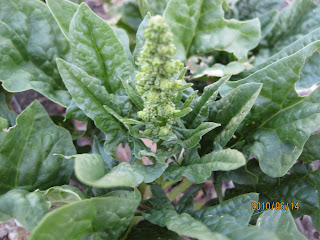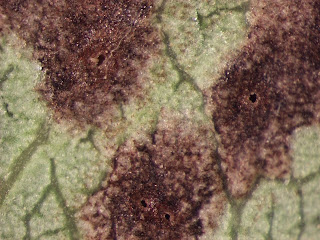The drying winds we have been experiencing have been sucking water from plants and soil. Screens used to divert the wind and protect young plants from blowing sand and debris also help reduce this moisture loss.I get my screens from the Colorado State Forest Service office. You can reach them at 248-7325.
A layer of mulch placed around the plant also helps maintain soil moisture. If you live in an area where the soil is still cold, a layer of mulch is not recommended at this time as it prevents the soil from warming, delays emergence and can increase potential for root rot problems. Be sure the mulch is not placed against the stem of the plant as this can increase stem disease problems.
Take care to ensure newly planted tomatoes, peppers, eggplants and other plants have adequate soil moisture. Until you are sure the frost season is over you should keep an eye on the weather and provide protection as necessary for these warm-season vegetable crops. Walls O’ Water or other season extenders should be considered.
Drip irrigation is one way to provide moisture to your garden. Some gardeners lay leaky hose or sprinkler hose along their rows of vegetables and flowers and in their shrub beds. Some use drip tube (aka dripper line and drip hose) or drip tape while others use PVC pipe through which they have drilled small holes Any of these techniques work as a way to water the vegetables, flowers and shrubs.
The effectiveness of the drip irrigation system depends on the cleanliness of the water, the rate the water is applied, the spacing of the emitters and the distance between the lines of drip tube.
Sprinkler hose, soaker hose or leaky pipe tend to plug even when using domestic water due to the lime that precipitates outof the water and fills the emitters and weep holes. You can avoid this problem by occasionally running acid through the system, but since acid can burn holes through clothing and skin this is not something I recommend. The use of drip tape or drip tube are better options.
Drip tape is made from thin plastic and thus is not as durable as thicker-wall dripper line. Drip tape requires a pressure regulator of no more than 15 psi (pounds per square inch) for the 15 mil tape. Thinner tape requires a lower pressure. Higher pressures blows the drip tape apart. More detailed guidance on the use of drip tape can be found at
http://www.dripworksusa.com/ttape-2.php .
Pressure regulators used with drip tube range from 20 psi to as high as 45 psi. With the psi as high as 100 at the pump or faucet, the pressure needs to be significantly reduced to use with drip tape and drip tube. You cannot reduce the pressure by turning down the flow at the faucet.Drip systems are not recommended with irrigation water unless you have very good filtration. You should consider using a filter even when the drip system is attached to domestic water. A 200 mesh filter is needed for drip tape and the ¼ inch drip tube. 150 mesh filtration is adequate for the larger 17 mm drip tube.
The drip tube selected should be based on the infiltration rate of the soil in your garden. The infiltration rate is a measure of how quickly water moves into the soil. Our silty clay loam soils have an infiltration rate of about 0.2 inches of water per hour. When water is applied faster than the infiltration rate, water pools or puddles. This causes soil particles to separate and a crust of silt and clay to cover the soil surface.
This is the same thing that happens when we have a heavy rain. A crust forms on the surface of the bare soil. This crust prevents water infiltration and forms a barrier to emerging seedlings. Applying water at the proper rate relative to the infiltration rate of the soil avoids the formation of this crust. Once a crust forms the soil needs to be raked or broken up to permit water to again enter the soil and for seedlings to emerge. Mulch helps reduce soil crusting but does not increase water infiltration.
Drip tube is available with different application (precipitation) rates. Drip tube with emitters spaced every 18 inches and rated at 0.4 gallons per hour applies water at a rate between 0.21 and .29 inches per hour. This is the proper application rate for our soil. Drip tube rated at 0.6 gallons per hour applies water at a rate of between 0.56 to 0.96 inches per hour. The ¼ inch drip tube is rated at 0.9 gallons per hour and applies water much too fast for our soil. Unless you have a very well drained soil, the 0.6 and ¼ inch drip tube is not what you should use. Lines of the 0.4 gallon per hour drip tube with emitters spaced at 18 inches should be spaced between 18 to 24 inches apart.
Irrigation companies seldom carry the 0.4 gallon per hour drip tube yet this is the one you should consider. They can order this for you. Be sure the emitters in the drip tube are eighteen-inch apart.










